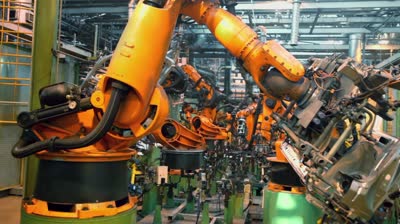Robots Come to Aid of Australian Manufacturers
In many industries like automotive manufacturing, robots have assisted in the manufacturing process to fill what has become a vital role in production. Now Australian manufacturers are looking to jump on the robotics bandwagon.
 In the cities of Melbourne and Brisbane, a series of workshops were held to find out just how robotics can solve the problems that these manufactures are facing.
In the cities of Melbourne and Brisbane, a series of workshops were held to find out just how robotics can solve the problems that these manufactures are facing.
One central topic was making the workplace safer through the usage of robots.
Australian manufacturers want robots that can lift and manipulate objects so that workers can then assemble them with greater precision. However, a major concern is the health and safety of human workers. These manufacturers want robots that can assist, while making sure that the human workers stay safe. They would even prefer for robots to take on jobs that are either dangerous for humans, or jobs that humans just wouldn’t want to do.
These manufacturers also want robots that can increase productivity. It has already been shown that they can increase yield in industries like spray painting, welding, and plastic part manufacturing, however, manufacturers from other industries are hopeful that they can assist in their fields as well.
One company in Australia, Drake Trailers, implemented an industrial robot back in 2008 and has shown an increase in their productivity. Not only did the robot decrease unit cost, it granted them an annual turnover of $45 to 50 million.
These Australian manufacturers would also like to see an increase in quality through using robots. They hope that with robots, time required for inspection and certification can be reduced and that product quality can be improved by making sure that misalignment and incorrect assembly is rectified.
They would also like to see to it that downtime is reduced. With robots and assistive automation, set-up time can be reduced through automated jig recalibration or capture and replay processes. This will reduce set-up time, while allowing for a rapid response.
Robots could also help with older workers. Manufacturers want to keep these skilled employees but want to make sure that they are safe to extend their working lives. Tasks that may be too difficult or dangerous for a skilled, aged worker can now be handled by a robot and then sent to said worker. For example, jobs like stopping a turbine and photographing potential problem areas can now be done by a robot and sent to a worker in another area.










